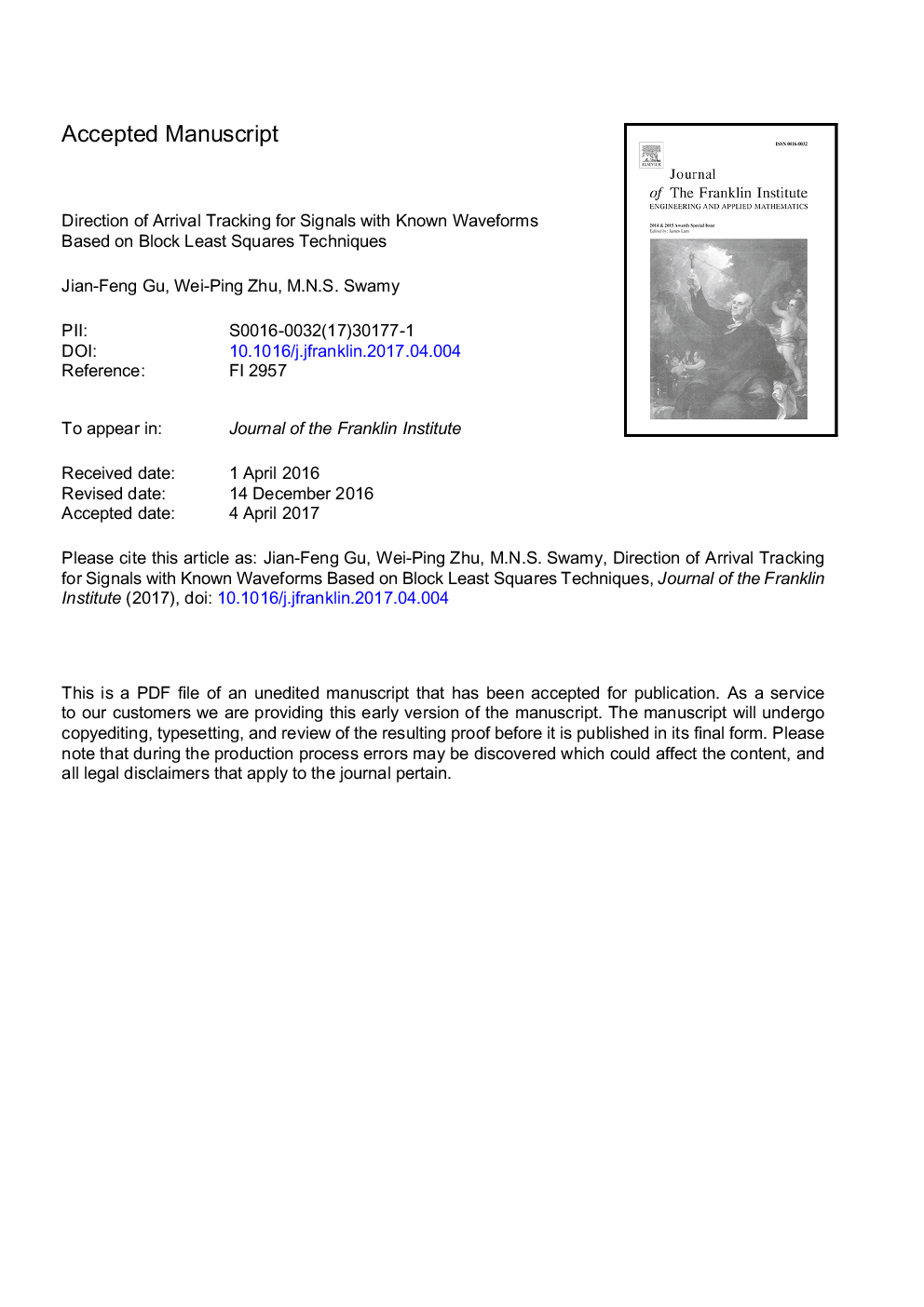| Article ID | Journal | Published Year | Pages | File Type |
|---|---|---|---|---|
| 4974208 | Journal of the Franklin Institute | 2017 | 33 Pages |
Abstract
In this paper, we address the problem of tracking DOA of multiple moving targets with known signal source waveforms and unknown gains in the presence of Gaussian noise using a nonuniform linear array. Herein, we make use of the fact that the output of each sensor can be described as a linear regression model whose coefficients each contain a pair of DOA and gain information corresponding to one target. These coefficients are determined by solving a linear least squares (LS) problem and then updated recursively based on a block QR decomposition recursive least squares (QRD-RLS) technique or a block regularized LS technique. Since the coefficients from different sensors have the same amplitude but variable phase information for the same signal, along with simple algebraic manipulations the well-known generalized least squares (GLS) are used to obtain an asymptotically-optimal DOA estimate without requiring a search over a large region of the parameter space. Computer simulations show that the proposed DOA tracking techniques when applied to a sparse antenna array can provide a better tracking performance than some of the existing methods do.
Related Topics
Physical Sciences and Engineering
Computer Science
Signal Processing
Authors
Jian-Feng Gu, Wei-Ping Zhu, M.N.S. Swamy,
